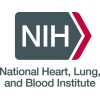
Diet, Insulin Resistance, and Cardiovascular Risk
Cardiovascular DiseasesHeart Diseases5 moreTo elucidate dietary factors that elevate risk for cardiovascular disease (CVD) in conjunction with insulin resistance.

Mechanisms Underlying Abnormal Ambulatory BP Patterns
Cardiovascular DiseasesHeart Diseases1 moreTo understand the mechanism(s) underlying sodium-dependent blood pressure control, and to determine the consequences thereof.

Epidemiology of Coronary Artery Calcification
Cardiovascular DiseasesAtherosclerosis3 moreUsing subjects from the Rochester Family Heart Study (RFHS), to characterize predictors of coronary artery calcification (CAC), a potent marker of atherosclerosis, among individuals from the general population.

Cardiac Autonomic Control in Children of HIV Positive Mothers
Acquired Immunodeficiency SyndromeArrhythmia2 moreTo establish the incidence, clinical spectrum, and natural history of cardiac dysautonomia as defined by heart rate spectral analysis in both HIV infected and noninfected children and to evaluate the value of heart rate spectral analysis for predicting dysrhythmias and sudden death in infants and children born to HIV infected mothers.

Novel Hemostatic Cardiac Risk Factors in Framingham
Cardiovascular DiseasesHeart Diseases7 moreTo investigate hemostatic variables in relation to cardiovascular risk in the Framingham Offspring Study cohort.

Biobehavioral Mechanisms of Blood Pressure Regulation
Cardiovascular DiseasesHeart Diseases1 moreTo investigate the role of biobehavioral factors in the pathogenesis of concentric left ventricular hypertrophy.

Coronary Artery Disease Mechanisms in High Risk Families--Racial Difference
Cardiovascular DiseasesCoronary Disease1 moreTo examine whether differences existed between asymptomatic white and African Americans known to be at high risk for premature coronary artery disease (CAD) in risk factor distributions, prevalence of occult coronary disease, and mechanisms of coronary disease expression.

Epidemiology of Acute Phase Protein and CHD
Cardiovascular DiseasesCoronary Disease2 moreTo use the Multiple Risk Factor Intervention Trial (MRFIT) stored serum bank to do nested case-control studies of various serum risk factors in coronary heart disease incidence and mortality.

Visceral Fat, Metabolic Rate, and CHD Risk in Young Adults
Cardiovascular DiseasesHeart Diseases2 moreTo measure visceral (intraabdominal) fat by computerized tomography (CT) scan and to measure resting metabolic rate by indirect calorimetry in 400 CARDIA subjects, ages 28-40 years (100 of each race/gender group) from the Oakland, California and Birmingham, Alabama centers.

Heart Disease and the Black Health Disadvantage
Cardiovascular DiseasesHeart Diseases1 moreTo utilize national population data sets prepared by the National Center for Health Statistics, to (1) examine the current Black disadvantage in cardiovascular (CV) health, (2) explore potential clinical and epidemiologic causes, (3) incorporate emerging knowledge of new risk factors and (4) compare trends in medical treatment and risk factors for the four sex-race groups.
